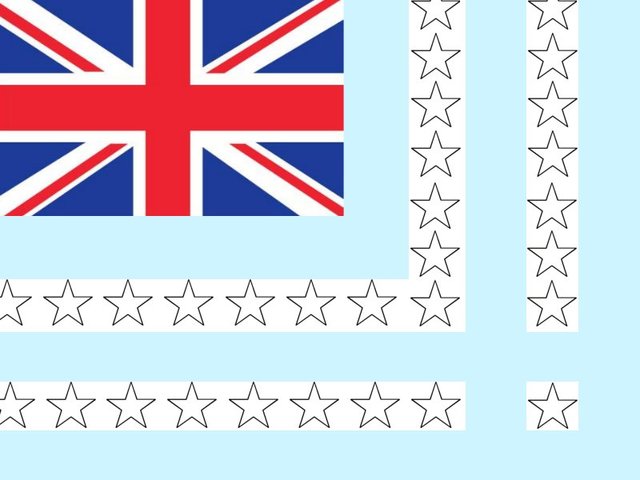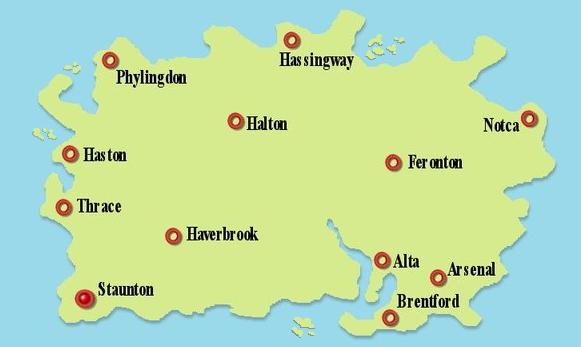Sectoria
From Confederacy
| Line 67: | Line 67: | ||
During WWII, Sectoria played as it supplied troops, aircraft and ships, to the on going battles in Africa and southern Europe. Sectoria's main job was to assist in the protection of the British colonies and to construct ships and aircraft to be used by the Allies. After the war, most Sectorians thought that they had earnt their independance from Britain. Suprisingly they were granted this right. To remember and appreciate where Sectoria got its power from, they continue to abide by traditional English values. | During WWII, Sectoria played as it supplied troops, aircraft and ships, to the on going battles in Africa and southern Europe. Sectoria's main job was to assist in the protection of the British colonies and to construct ships and aircraft to be used by the Allies. After the war, most Sectorians thought that they had earnt their independance from Britain. Suprisingly they were granted this right. To remember and appreciate where Sectoria got its power from, they continue to abide by traditional English values. | ||
| - | |||
| - | |||
| - | |||
Revision as of 19:55, 9 April 2008
The Great Constituencies of Sectoria are located west of Australia, east of Madagascar, North-West of Lembrooke and south of India. It is commonly known as Sectoria, which has a population consisting of just under
264 million people.
The capital and the largest city is Staunton, with a population of roughly 7.6 million people.
History
No viable evidence has been discovered to prove that human life existed on Sectoria before the 5th Century. Historians believe that Sectoria was colonised by Roman stragglers near the end of the year 456 AD, one year after Rome had been "sacked" by rebels. Ancient ruins and artifacts indicate that these few settlers landed on the coast, of what is currently known as Staunton, where they established themselves by building a settlement.
By the year 512 AD, Staunton had grown into a small town, but no one had ever explored beyond the view of the settlement. This was until 513 AD where it is written that a small group of people had been exiled from the town for crimes such as stealing. The group apparently headed north, up the coast, where they finally settled and started building their own settlement which was named Thrace after a Greek/Barbarian civilisation which used to be an enemy to the Roman Empire. The citizens living in Staunton were obviously not amused with the name Thrace being given to a settlement in their new country, so relations between the towns deteriorated and a small civil war broke out in 516 AD. This civil war led to a line being drawn surrounding each town.
The year 714 AD ushered in an era of national peace between the towns after years of bloodshed. However, the lines which were created to seperate the tribes, were never removed therefore the towns still fended for themselves.
After years of exploration and expansion, towns started popping up all over Sectoria as far as the western coast. By 1302, trading relations with surrounding countries boomed building a strong national economy. Due to its convenient bay, Thrace and Phylingdon became the main epicentres for trade with Africa. Due to the Constituencies, other cities such as Staunton, were being left behind both technologically and economically. This lead to a mass migration of people to the North-West. Still being a rival city to Trace, Staunton used the little resources to construct and dig out an artificial bay to try to offer the perfect place for ships to dock. Suprisingly, this had great effects. Interested in the new development, businesses funded the project in return for the full use of the docks. By 1408, the docks had been completely finished, and soon the docks became burdened with a huge flow of marine traffic. However, they did not keep the bounty of the trading for themselves, Staunton set up its own Ministry of Trade which built roads connecting all major towns and cities with it to encourage national trade. For the first time since its establishment, the whole nation was working together peacefully.
Throughout the years, the nation was going through a time of growth. This was halted as trade only existed with nearby countries and there wasn't enough trade going on in order to provide for any major growth and it didn't have enough to build a military campaign against other countries to expand its territories.
In 1716, British explorers landed on Sectoria, but they were welcomed only with violence from the natives. The explorers were either killed, or forced to leave. The British retaliated with a large attack against Sectoria. Unable to compete against a force so large advanced, the Sectorian army was killed in battle. After a month, Sectoria surrendered.
Because Sectoria was now part of the British Commonwealth, railways, roads, hopsitals, schools etc. were all built to provide for the people. Trading also took off with the rest of the world and with it, Sectoria was becoming an internationally renowned country thanks to its rource rich environment. The lands continued to be exploited for its resources at an alarming rate, and a trail of destruction was being left behind by businesses who had torn up the natural landscape for these goods. Because of this in 1901, reservations were being set up in the places that were most beautiful and the lands which were worst hit.
During WWII, Sectoria played as it supplied troops, aircraft and ships, to the on going battles in Africa and southern Europe. Sectoria's main job was to assist in the protection of the British colonies and to construct ships and aircraft to be used by the Allies. After the war, most Sectorians thought that they had earnt their independance from Britain. Suprisingly they were granted this right. To remember and appreciate where Sectoria got its power from, they continue to abide by traditional English values.


